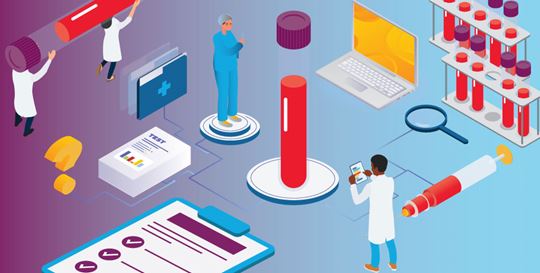Antibiotic resistance is today one of the greatest threats to global health. It can affect anyone, representing a public health problem, and therefore the World Health Organization (WHO) considers it one of its priorities in health. Projections indicate that in 2050 there will be more deaths from this cause than those currently caused by cancer. Further, its economic impact (according to a recent study in the United Kingdom) will cost the world economy an estimated USD 100 trillion (about USD 310,000 per person in the U.S.) annually.1
In 2022, the United States Centers for Disease Control and Prevention (CDC) issued a special report on the impact that COVID-19 had on antimicrobial resistance (AMR) in the hospital setting, comparing 2020 with 2019, and showed a 35% increase in Enterobacterales and a 32% increase in pseudomonas.2
Importance of the Role of the Microbiology Laboratory:
- Know the epidemiology of the institution
- Make proper use of computer tools
- Participate in professional microbiology societies and antimicrobial stewardship committees
- Implement and socialize Sample Collection Manual
- Establish Footnotes regarding antimicrobial resistance according to the resistance mechanisms detected
- Determine confirmatory tests for detecting resistance mechanisms according to each institution's possibilities
- Establish direct communication with the Infection Control Committee3,4
Final reports should include comments in the form of a Footnote that help the clinician interpret the meaning of the isolates, susceptibility, and some management warnings. These recommendations should be discussed in the Infection Control Committee.
What is the use of including Footnotes in the final report?
Footnotes support the rational use of antimicrobials and consider the following criteria:
- Local epidemiology
- Clinical indications
- Natural strengths
- Use of 1st line antibiotics
- Existing alternatives5,6
In the microbiological report, it is important to include the interpretation of phenotypes associated with resistance mechanisms through confirmatory tests due to the great epidemiological impact of transmission. For example, when a species is resistant due to enzymatic degradation of the antibiotic. Among the most important enzymes involved in antibiotic resistance at the clinical and epidemiological level are ESBLs and Carbapenemases. 4,7
Automated systems include expert rules, which are databases with established rules about the behavior of bacteria and antibiotics according to the genus and species of bacteria, type of antibiotic, and resistance mechanisms. The Expert System helps to control laboratory results by finding unusual results and, through alerts, proposes the appropriate corrections or verifications. 8
The Microbiology Laboratory plays a fundamental role in development of the Antimicrobial Optimization Program and is responsible for providing quality results.5
What does the WHO say about the role played by the Microbiology Laboratory in the Antimicrobial Stewardship Program?
The Microbiology Laboratory is essential to support the proper use of antibiotics and to ensure that, as far as possible, 1st and 2nd line antibiotics are always used. It also guarantees a good quality clinical diagnosis and interprets test results.9
In 2015, the WHO created the Global Antimicrobial Resistance and Use Surveillance System (GLASS), a monitoring system for AMR. The microbiology laboratory plays a very important role with GLASS since the ultimate purpose of the surveillance of hospital consumption of antimicrobials is to support strategies for the optimal use of them and the control of AMR.10 This includes the issuance of culture results, identification and susceptibility testing, verification, analysis and consolidation of data, and reporting to the local and regional regulatory bodies (allowing verified global reports to be obtained, analyzed, and shared).

 English
English





